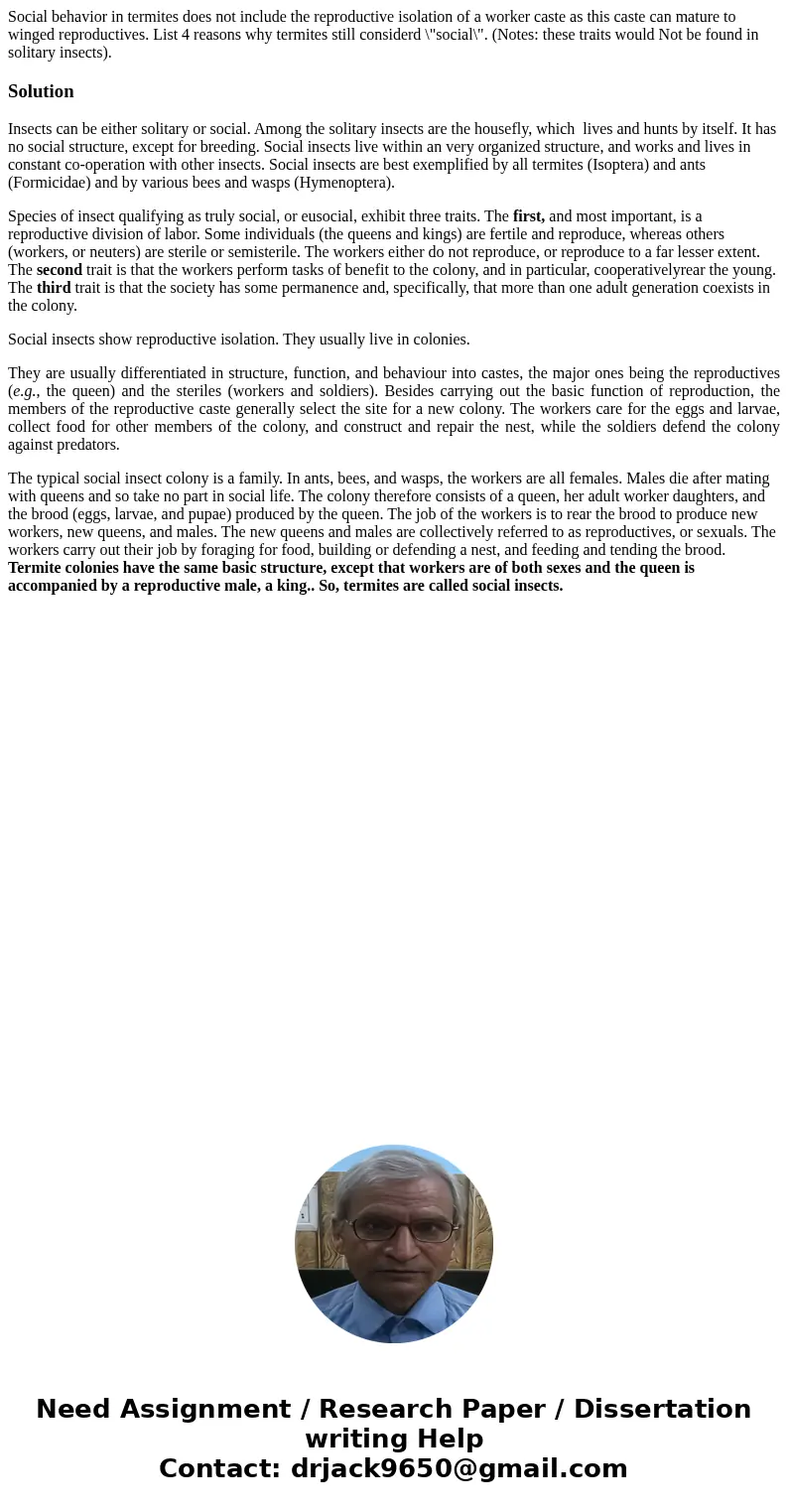Social behavior in termites does not include the reproductiv
Social behavior in termites does not include the reproductive isolation of a worker caste as this caste can mature to winged reproductives. List 4 reasons why termites still considerd \"social\". (Notes: these traits would Not be found in solitary insects).
Solution
Insects can be either solitary or social. Among the solitary insects are the housefly, which lives and hunts by itself. It has no social structure, except for breeding. Social insects live within an very organized structure, and works and lives in constant co-operation with other insects. Social insects are best exemplified by all termites (Isoptera) and ants (Formicidae) and by various bees and wasps (Hymenoptera).
Species of insect qualifying as truly social, or eusocial, exhibit three traits. The first, and most important, is a reproductive division of labor. Some individuals (the queens and kings) are fertile and reproduce, whereas others (workers, or neuters) are sterile or semisterile. The workers either do not reproduce, or reproduce to a far lesser extent. The second trait is that the workers perform tasks of benefit to the colony, and in particular, cooperativelyrear the young. The third trait is that the society has some permanence and, specifically, that more than one adult generation coexists in the colony.
Social insects show reproductive isolation. They usually live in colonies.
They are usually differentiated in structure, function, and behaviour into castes, the major ones being the reproductives (e.g., the queen) and the steriles (workers and soldiers). Besides carrying out the basic function of reproduction, the members of the reproductive caste generally select the site for a new colony. The workers care for the eggs and larvae, collect food for other members of the colony, and construct and repair the nest, while the soldiers defend the colony against predators.
The typical social insect colony is a family. In ants, bees, and wasps, the workers are all females. Males die after mating with queens and so take no part in social life. The colony therefore consists of a queen, her adult worker daughters, and the brood (eggs, larvae, and pupae) produced by the queen. The job of the workers is to rear the brood to produce new workers, new queens, and males. The new queens and males are collectively referred to as reproductives, or sexuals. The workers carry out their job by foraging for food, building or defending a nest, and feeding and tending the brood. Termite colonies have the same basic structure, except that workers are of both sexes and the queen is accompanied by a reproductive male, a king.. So, termites are called social insects.

 Homework Sourse
Homework Sourse